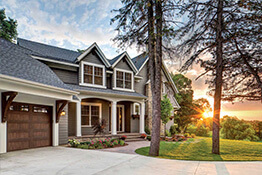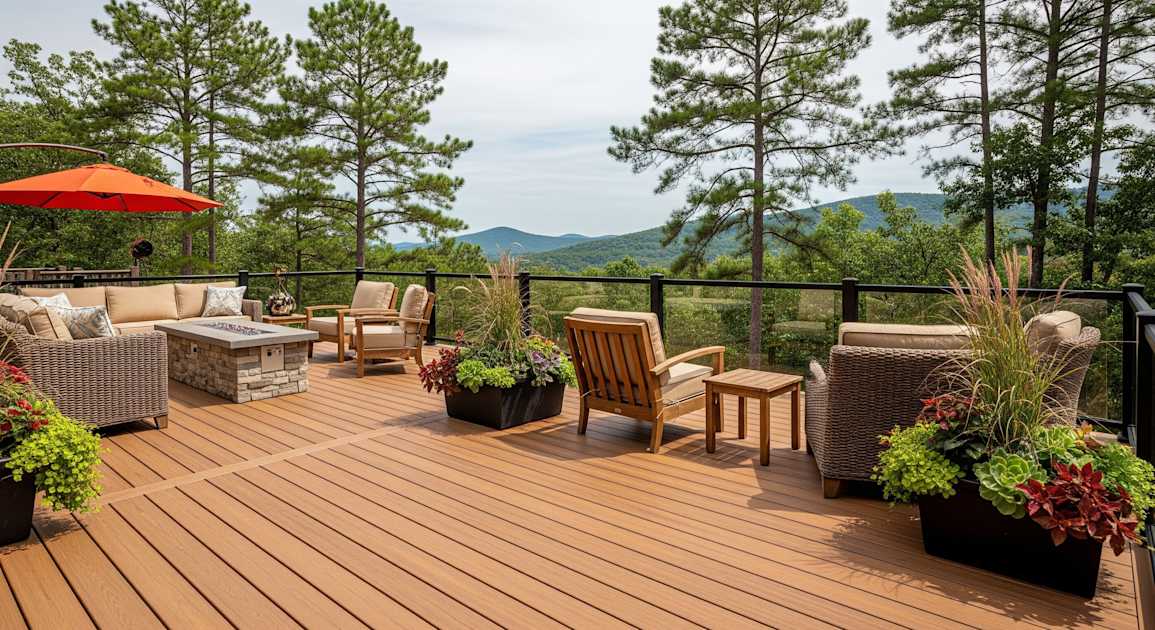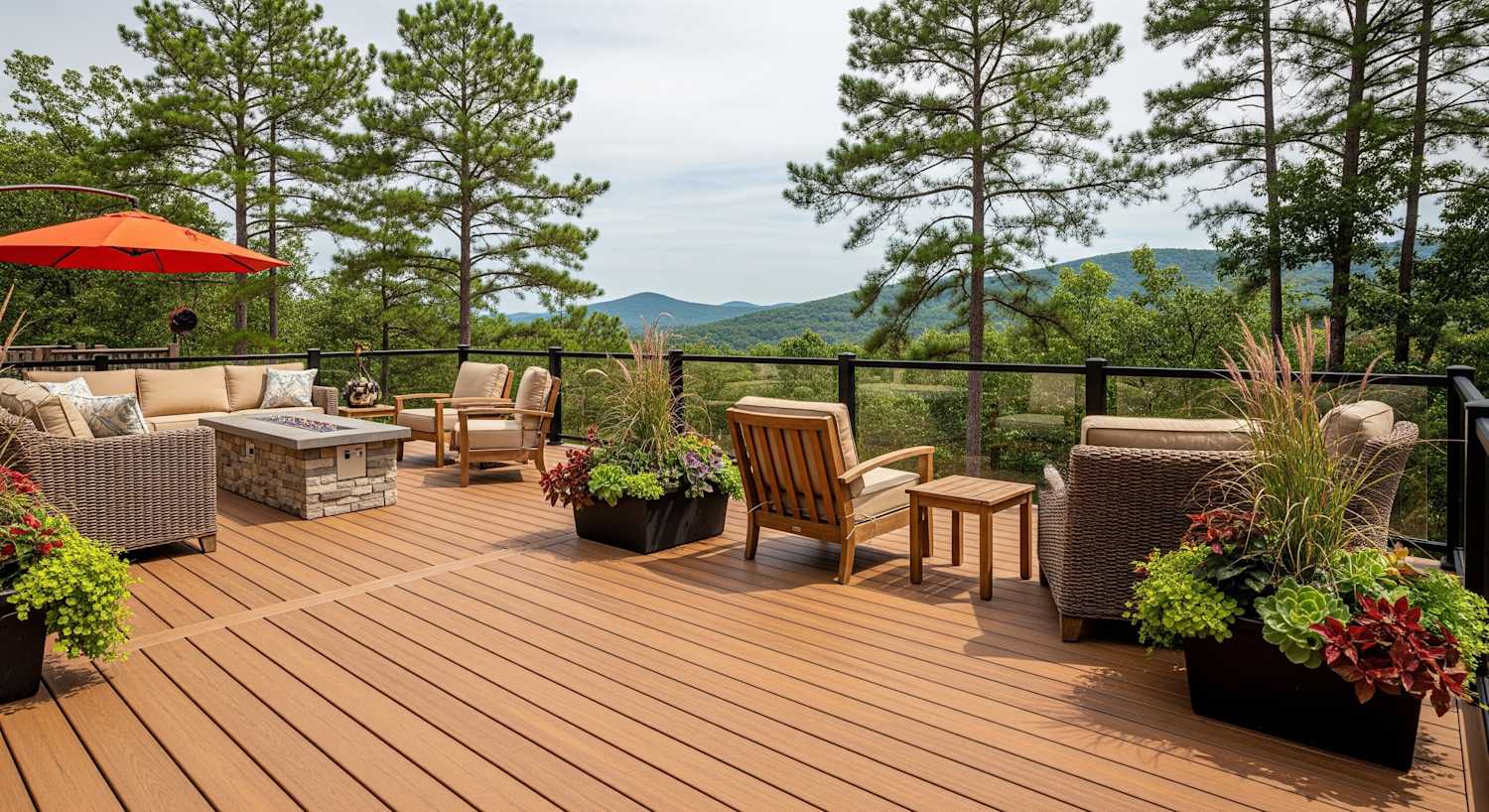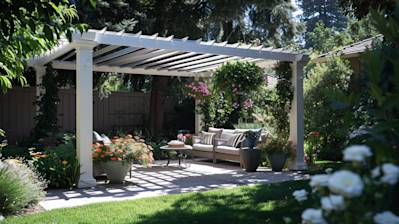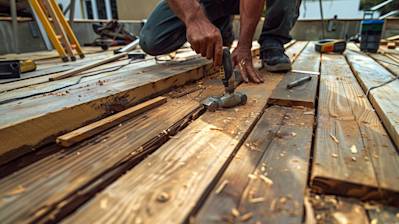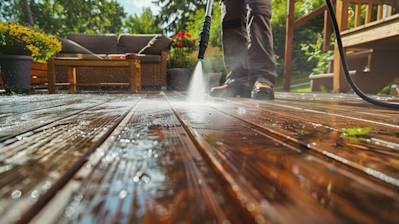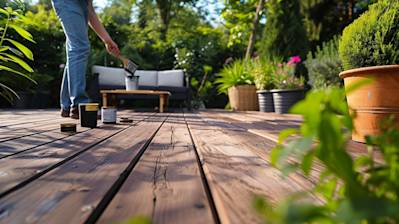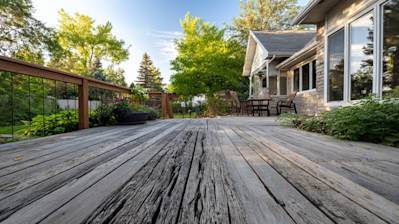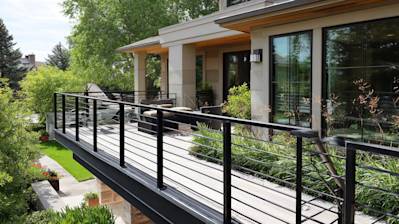Deck designing is an essential part of a beautiful and functional home. The choice of deck boards provides the very basis of your outdoor space and can dictate the mood, functionality, and longevity of your deck. While wood once stood alone as the go-to material for deck construction, composite deck boards have entered the scene to shake things up. This guide will discuss everything you need to know about composite deck boards.
The Concept of Composite Deck Boards
Composite decking is a man-made product that combines recycled wood fibers and plastic. It offers the same look and feel as wood but with added benefits such as increased durability, low maintenance, and a long lifespan. While every composite manufacturer uses a slightly different mixture, the standard ratio is around 50% wood, 40% plastics, and 10% bonding agents and color pigmentation.
The Anatomy of Composite Deck Boards
Composite deck boards are a blend of plastic (polypropylene, PVC, or PE) and wood fibers (sawdust, wood chips, bamboo fibers), creating a robust and durable decking material. UV stabilizers, coloring agents, anti-mold agents, and adhesive substances are added to improve and maintain the aesthetics and performance of the decking board.
Core Material
The core of the composite decking is typically a blend of:
- Recycled hardwood
- Recycled softwood
- Recycled plastics
Cap Layer
The protective cap layer shields the board from damage caused by mold, mildew, UV radiation, and scratching. High quality composite deck boards are fully capped, meaning the protective coating surrounds the board on all four sides.
Highlights of Composite Decking Material
Composite deck boards come laden with numerous benefits that make them a worthy choice for homeowners and constructors.
- Durability: Given the combination of plastic and wood fibers, composite decks are tough and can stand up to weather, pests, and heavy foot traffic.
- Low Maintenance: Unlike wood, composite doesn’t need staining, sanding, or sealing. A simple wash with soap and water is all the maintenance it requires.
- Aesthetic Appeal: Composite board manufacturers have stepped up their game, providing deck boards that mimic a wide variety of wood grains and colors.
- Environment-friendly: Most composite decking is made from recycled materials, making it an eco-friendly choice.
The Production Process of Composite Deck Boards
The process of how composite deck boards are made is fascinating. It involves the following steps:
- Collection of materials: The process begins by gathering the raw materials. Most manufacturers use waste wood and recycled plastics.
- Blending: The collected components are then mixed with dyes to simulate the appearance of wood. Other materials like bonding agents are added to this mixture.
- Extruding: The mixture is then extruded through a molded opening to create a certain shape. This process can be adjusted to create deck boards of different widths, lengths, and shapes.
- Cooling: The boards are then cooled slowly to avoid immediate contraction, which could lead to warping.
Choosing the Right Composite Deck Boards
When choosing composite deck boards for your project, there are a few factors you should consider:
- Color and Texture: Composite decking is now available in a plethora of color options ranging from classic browns to cool greys. There's also a wide variety of textures to choose from.
- Quality: Not all composite decking is created equal. Do your homework to understand the quality each manufacturer provides.
- Price: Keep your budget in mind when choosing your decking. Remember, high-quality composite decking is typically more expensive but also lasts longer and provides more value over time.
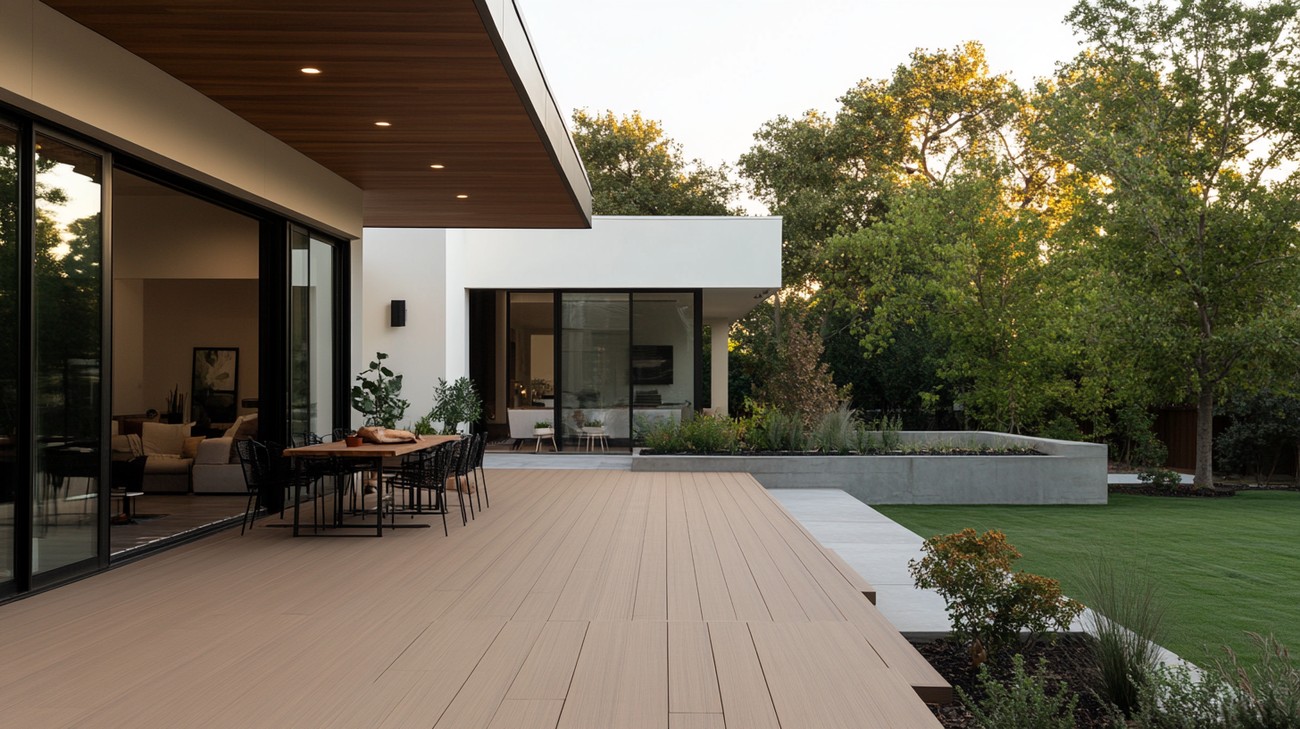
Frequently Asked Questions about Composite Deck Boards
Are composite deck boards eco-friendly?
Yes, they are. Many composite deck boards are fashioned from recycled materials like plastics and wood industry waste, thus reducing the pressure on landfills. Additionally, unlike traditional wood decks, these boards don't require the felling of trees, helping to support forest preservation efforts.
How durable are composite deck boards?
Composite deck boards are very durable. They are resistant to warping, rotting, and insect damage, unlike traditional wood decking materials. They also maintain their appearance for a longer time, as they don't split or crack easily. The exact lifespan varies by manufacturer and specific product but on average, composite deck boards usually last over 25-30 years with proper maintenance.
Can I install composite deck boards myself?
While it's possible to install composite deck boards yourself, it’s recommended to hire a professional for the same. Proper installation affects the longevity and appearance of the deck. Working with professionals can ensure proper installation and potentially prevent issues down the line.
Can composite deck boards withstand extreme weather conditions?
Composite deck boards are designed to withstand a wide range of weather conditions. They can hold up against strong winds, heavy rainfall, and even extreme temperature changes. Cold weather does not cause them to crack, and they are also resistant to moisture and UV rays from the sun.
Are composite deck boards easy to maintain?
Yes, they are. Composite deck boards require minimal maintenance as compared to traditional wood decks. Basic cleaning, usually with just soap and water, is generally enough to keep them looking new. They don't needs staining, painting, or sealing, which are routine requirements for wood decks.
Are composite deck boards slip-resistant?
Many composite deck boards are designed with slip-resistance in mind, making them a safe choice for decks around pools, spas, or any area where moisture may be present. Always check the product specifications or consult with a decking expert to ensure the decking you choose has this feature.
Do composite deck boards fade over time?
While composite deck boards are designed to resist fading, some minimal fading can occur over an extended period, especially when exposed to prolonged sunlight. Choosing high-quality composite decking with UV protection can greatly reduce this fading.
How much do composite deck boards generally cost?
The cost of composite deck boards depends on various factors including the brand, quality, and the size of boards. They are typically more expensive than traditional wood decking materials but can be cost-effective in the long run due to their low maintenance needs and longer lifespan.
What's the best way to clean composite deck boards?
Regularly sweeping your composite deck to prevent the buildup of dirt, leaves, and debris is recommended. For a deep clean, use mild detergent and a soft bristle brush, then rinse with a garden hose. Avoid power washing as it can damage the board's surface.
Can I paint or stain my composite deck boards?
While you can paint or stain composite deck boards, it is generally not recommended. The beauty of composite decking is its long-lasting colors and finishes. However, if you choose to alter the color, ensure you clean the boards thoroughly, use a high-quality primer, and follow with a paint or stain designed for composite materials.
Pros of Composite Deck Boards
1. Durability
One of the major advantages of composite deck boards is their durability. Composite is much more resistant to harsh weather conditions, sunlight, and even regular wear and tear compared to traditional wood.
UV Resistance
Composite is specifically manufactured to resist the effects of UV rays, which can fade color and cause wood to split or crack over time. Composite boards maintain their color and structural integrity even under constant sunlight exposure.
Weather Resistance
Composite materials are designed to withstand a variety of weather conditions, from severe storms to extreme cold. They hold out against rain, snow, and ice much better than wood. They do not rot or warp and are resistant to mold and mildew, reducing the risk of structural damage.
Wear and Tear Resistance
Wear and tear from accidents, moving furniture, or just from general use, is less likely to mar composite materials. They are designed to be scratch resistant and maintain their appearance even after years of foot traffic.
2. Low Maintenance
Composite deck boards require significantly less maintenance than traditional wood decks.
No Sanding, Staining or Sealing
Unlike wood, composite does not need to be sanded, stained, or sealed on a regular basis. This can save you both time and money over the deck's lifespan.
Easy Cleaning
Cleaning a composite deck is much easier compared to wood. A simple combination of soap and water is usually all that’s needed for regular cleaning.
3. Aesthetics
Composite materials manage to remain aesthetically pleasing while offering superior durability and maintenance requirements.
Variety of Colors and Textures
Composite deck boards come in a wide variety of colors and textures, making it easy to match the deck with the overall design of your house.
Consistent Appearance
Composite materials stay looking good year after year, maintaining their color and texture while traditional wood grays and weathers over time.
Cons of Composite Deck Boards
1. High Initial Cost
The cost of composite decking is one of the most significant downsides.
Material Cost
Composite deck boards are often more expensive than wood upfront. Depending on the specifics of your project, a composite deck can cost two to three times more than a comparable wooden deck.
Installation Cost
The added complexities of installing composite materials, which often require special fastening systems or additional framing, can increase labor costs.
2. Heat Retention
Composite materials tend to absorb and retain heat.
Hot Surface
When exposed to direct sunlight, especially during summer months, composite deck boards can become uncomfortably hot underfoot, unlike natural wood.
3. Limited Flexibility
Despite their variety and versatility, composite deck boards do come with a few limitations.
Challenges with Complex Designs
While composite is perfect for simple deck designs, if you want a more complex, multi-level design or intricate details, it might be a bit challenging as composite boards are difficult to shape or bend.
Difficulty in Changing Color
Changing the color or finish of your composite deck boards is nearly impossible because they are manufactured to retain their color, unlike wood which can be sanded and repainted.
4. Heavy Weight
Composite deck boards are heavier than wood. This means that additional framing support might be needed, which could increase the cost of your decking project.
Myths and Misconceptions About Composite Deck Boards
Composite deck boards have gained popularity over the years, thanks to their durability, ease of maintenance, and aesthetic appeal. However, like any other product, there are myths and misconceptions that surround these boards. In this section, we'll debunk some of these misconceptions, providing you with accurate information to make informed decisions.
Myth 1: Composite Decking Looks Unnatural
Reality
In the early development stages, composite decking indeed had an artificial appearance, which led to this misconception. However, modern composite decking has evolved significantly. It now comes in a range of colors and textures that mimic the appearance of natural wood convincingly. The use of a realistic wood grain pattern contributes to the aesthetic beauty of composite decking, making it hard even for seasoned experts to distinguish it from natural wood.
Myth 2: Composite Decking Does Not Require Any Maintenance
Reality
While composite decking is low-maintenance, it's not entirely maintenance-free. While you won't need to contend with issues such as splitting, squeaking, or rotting, composite decking still needs cleaning. Dirt, dust, and spills should be cleaned to avoid staining. However, the maintenance required for composite decking is minimal compared to that of wood decking, primarily because it does not need refinishing or resealing.
Myth 3: Composite Decking Is Too Expensive
Reality
While the initial cost of composite decking may be higher than that of wood decking, it can be cost-effective in the long run. The lifetime upkeep costs of composite decking are significantly lower because it does not require regular resealing, staining, or replacement. Also, more affordable composite options have emerged without compromising on quality, thereby making composite decking accessible for various budgets.
Myth 4: Composite Decking Is Not Eco-Friendly
Reality
In contrast, most composite decking is eco-friendly. It is often made from recycled materials such as plastics and wood waste like sawdust. The manufacturing process is also optimized to reduce waste. While traditional wood decking involves cutting down trees, composite decking utilizes recycled materials, making it an environmentally sustainable choice.
Myth 5: Composite Decking Is Slippery
Reality
Contrary to this myth, most composite decking is designed to be slip-resistant, even in wet conditions. The deck boards are often crafted with deep grain patterns to increase friction, thereby reducing the chances of slipping.
Myth 6: Composite Decking Gets Too Hot
Reality
While composite decking may absorb more heat than traditional wood, it doesn't mean your deck will become unbearably hot. The heat absorption depends on the color of your deck—the lighter the color, the less heat it will absorb. In addition, many high-quality composite decks are now made to be heat resistant.
Myth 7: Composite Decking Doesn't Last Long
Reality
Composite decking is highly durable and able to withstand the elements with extreme durability. Many composite decks come with a long-term warranty, suggesting that manufacturers trust in the longevity of this material. Most composite decks will outlast conventional wood decks, making them a great investment.
Myth 8: Composite Decking Fades Over Time
Reality
High-quality composite decking is designed to maintain its color for a long time. While minimal fading might occur due to constant exposure to sunlight and weather elements, current production methods have significantly reduced this effect. Some manufacturers even offer fade and stain warranties, ensuring your deck maintains its appearance for many years.
Myth 9: Composite Decking is Not Suitable for Cold Climates
Reality
Composite decking boards are designed to withstand all types of climates, including cold ones. They are resistant to cracking and splitting, which are common issues with wood in cold weather. Their durability remains unimpeded regardless of temperature changes, making them suitable even for areas experiencing freezing weather.
Having the correct information about composite deck boards is vital before deciding on the best decking material for your project. Above are some clarifications on the most common misconceptions surrounding composite deck boards.
Summary
So there you have it! Composite deck boards are the fascinating fusion of wood and plastic materials, offering a long-lasting, low maintenance alternative for decking desires. These eye-catching boards bring the beautiful aesthetics of traditional wood decking, without the hassle of regular staining or painting.
Another fantastic thing about composite deck boards is their environmental friendliness. They are commonly made from recycled materials, cutting down on landfill waste. Plus, you get to enjoy the added bonus of knowing you're making a more sustainable choice, without compromising on the quality or the look of your deck.
Lastly, when it comes to durability, composite deck boards really shine. They are highly resistant to rot, decay, and insect damage. Moreover, they are designed to endure the harshest weather conditions, meaning they will look great for years to come. Kicking back, relaxing or entertaining on your sturdy, stylish composite decking- what could be better?
About US Quality Construction of Lexington
US Quality Construction of Lexington is a premier construction company based in Lexington, KY. Known for our expertise and professionalism, we take great pride in delivering top-notch services to our customers. Our diverse construction portfolio ranges from residential to commercial projects, showcasing our dedication to excellence and precision regardless of the project's size or complexity. We believe that every successful project begins with understanding our clients' vision, and we apply our innovation, skill and experience to turn those visions into reality. Choosing US Quality Construction of Lexington means opting for reliability, quality, and uncompromised dedication.
Tags: decking, outdoor living, building materials,
